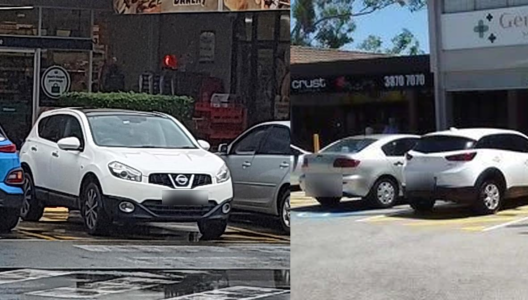Aussies enraged by this prevalent misuse of disabled parking! Are you guilty of it too?
By
- Replies 14
Have you ever considered how a seemingly innocuous decision can disrupt someone else's day?
Imagine the frustration of someone who relies on those spaces only to find them occupied by those who don't need them.
A disturbing trend has been causing outrage across Australia, highlighting a lack of awareness and consideration beyond just the parking spaces.
The issue involves the misuse of the yellow-lined bays next to disability parking spots.
These areas, marked with yellow diagonal lines, are not an extension of the parking space or a loading zone.
These zones are essential for drivers with wheelchairs or mobility devices, providing the necessary room to manoeuvre safely in and out of their vehicles.
Despite their importance, these access bays are frequently occupied by motorists who either ignore the rules or claim ignorance.
A social media group, The Australian Disability Parking Wall of Shame, has become a platform for frustrated drivers to voice their concerns and share evidence of this widespread problem.
Photos and stories posted on the group show cars and motorbikes carelessly parked in these vital areas outside shopping centres, grocery stores, and sporting grounds.
The frustration is palpable among those who rely on these spaces.
One group member recounted confronting drivers only to be met with dismissive or confused reactions.
It indicates that more education is needed on what these bays are for and who they are meant to serve.
Standards Australia has set clear guidelines for disability parking spaces: they must be 5.4m long and 2.4m wide, ensuring enough room for access.
Yet, these standards are meaningless if they are not respected and enforced.
Earlier this year, the issue was highlighted when Paniora Nukunuku, a student at the University of Technology Sydney with a prosthetic leg, found multiple cars parked illegally in the disabled parking area.
With no disability permit stickers visible, Mr Nukunuku was left 'furious' at the lack of consideration for students with disabilities.
His frustration led him to take a stand by parking his car to block the offending vehicles, which sparked a tense confrontation.
‘I was just furious and disappointed that people would do this to students … It’s messed up,’ Nukunuku said.
‘That service is supposed to be for disability students on campus.’
Disappointed, the digital and social media student opted to park his car in a different location and brought the issue to InterPark's attention.
While a staff member occasionally offered to assist him in finding a closer spot when the designated disabled spots were occupied, Mr. Nukunuku found this solution inadequate.
As he took matters into his own hands, he parked across three vehicles, effectively blocking them in. After a tense encounter with an InterPark security team member and one of the drivers, he eventually relocated his car and departed.
His message is clear: when you misuse a disabled parking spot or the adjacent access bay, you're not just breaking a rule—you're impacting the lives of people who rely on these spaces.
‘You being in there means someone misses out—someone who isn’t like an able-bodied person but someone who’s disabled, and it sucks,’ he said.
The University of Technology Sydney responded to the incident by addressing the matter with InterPark, the company managing the carpark, as a 'matter of urgency'.
However, InterPark has yet to comment on the situation.
Mr Nukunuku's experience is not an isolated incident. It reflects a broader societal issue where the needs of individuals with disabilities are often overlooked.
Such is the story of a wheelchair user who expressed his frustration at discovering vehicles parked on the yellow lines beside accessibility bays.
 Have you encountered similar issues with disabled parking in your area? What measures do you think could be taken to improve the situation? Share your thoughts and experiences in the comments below.
Have you encountered similar issues with disabled parking in your area? What measures do you think could be taken to improve the situation? Share your thoughts and experiences in the comments below.
Imagine the frustration of someone who relies on those spaces only to find them occupied by those who don't need them.
A disturbing trend has been causing outrage across Australia, highlighting a lack of awareness and consideration beyond just the parking spaces.
The issue involves the misuse of the yellow-lined bays next to disability parking spots.
These areas, marked with yellow diagonal lines, are not an extension of the parking space or a loading zone.
These zones are essential for drivers with wheelchairs or mobility devices, providing the necessary room to manoeuvre safely in and out of their vehicles.
Despite their importance, these access bays are frequently occupied by motorists who either ignore the rules or claim ignorance.
A social media group, The Australian Disability Parking Wall of Shame, has become a platform for frustrated drivers to voice their concerns and share evidence of this widespread problem.
Photos and stories posted on the group show cars and motorbikes carelessly parked in these vital areas outside shopping centres, grocery stores, and sporting grounds.
The frustration is palpable among those who rely on these spaces.
One group member recounted confronting drivers only to be met with dismissive or confused reactions.
It indicates that more education is needed on what these bays are for and who they are meant to serve.
Standards Australia has set clear guidelines for disability parking spaces: they must be 5.4m long and 2.4m wide, ensuring enough room for access.
Yet, these standards are meaningless if they are not respected and enforced.
Earlier this year, the issue was highlighted when Paniora Nukunuku, a student at the University of Technology Sydney with a prosthetic leg, found multiple cars parked illegally in the disabled parking area.
With no disability permit stickers visible, Mr Nukunuku was left 'furious' at the lack of consideration for students with disabilities.
His frustration led him to take a stand by parking his car to block the offending vehicles, which sparked a tense confrontation.
‘I was just furious and disappointed that people would do this to students … It’s messed up,’ Nukunuku said.
‘That service is supposed to be for disability students on campus.’
Disappointed, the digital and social media student opted to park his car in a different location and brought the issue to InterPark's attention.
While a staff member occasionally offered to assist him in finding a closer spot when the designated disabled spots were occupied, Mr. Nukunuku found this solution inadequate.
As he took matters into his own hands, he parked across three vehicles, effectively blocking them in. After a tense encounter with an InterPark security team member and one of the drivers, he eventually relocated his car and departed.
His message is clear: when you misuse a disabled parking spot or the adjacent access bay, you're not just breaking a rule—you're impacting the lives of people who rely on these spaces.
‘You being in there means someone misses out—someone who isn’t like an able-bodied person but someone who’s disabled, and it sucks,’ he said.
The University of Technology Sydney responded to the incident by addressing the matter with InterPark, the company managing the carpark, as a 'matter of urgency'.
However, InterPark has yet to comment on the situation.
Mr Nukunuku's experience is not an isolated incident. It reflects a broader societal issue where the needs of individuals with disabilities are often overlooked.
Such is the story of a wheelchair user who expressed his frustration at discovering vehicles parked on the yellow lines beside accessibility bays.
Key Takeaways
- Drivers with disabilities in Australia expressed their frustration over individuals parking in yellow-lined bays next to disability parking spots.
- These areas allow wheelchair or mobility device users to safely get in and out of their vehicles.
- There has been a backlash on social media against those who misuse these critical parking areas.
- An incident involving a student with a prosthetic leg at the University of Technology Sydney highlighted the ongoing issue, leading to the university addressing the problem as a 'matter of urgency'.








